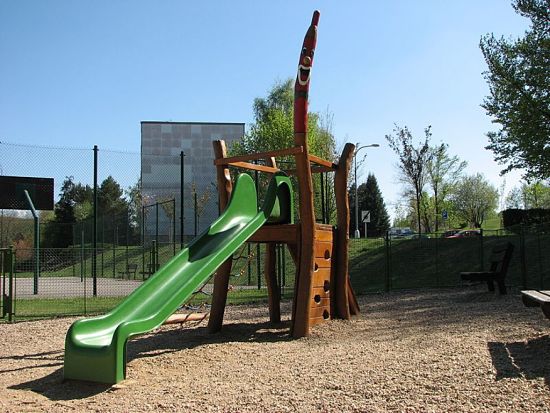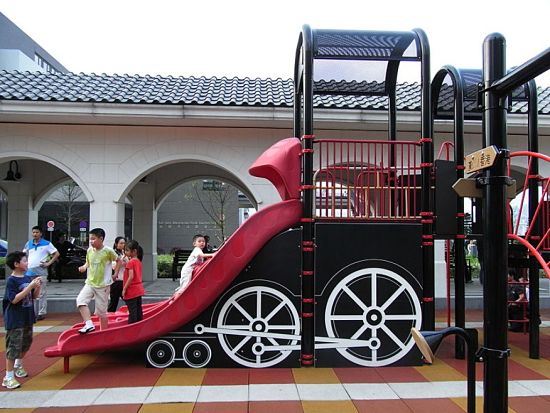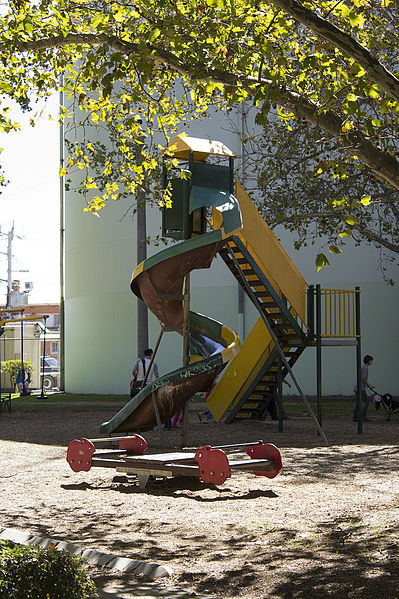Playground Slide Dangers : How Parents Can Reduce the Injury Risks?
Unexpected injuries can occur on any playground equipment and all types of equipment have some risk of causing injury to children.
Slides are of particular concern for many parents, especially when children slide down by themselves. Like many risks in life, sometimes doing what seems right to reduce the risks, can have the opposite effect because of ignorance.
Unfortunately this applies to playground slides. First and foremost, parents of very young children know to avoid the slide and try to get their child to play on other age-suitable equipment as long as they can. Parents also recognise that individual children may be ready for slides at various ages. There are also a wide variety of slides at various playgrounds and parks that present various challenges and risks, mostly related to their height and angle of descent. The general advice is that for higher, steeper and longer slides, especially for slides with twists and turns, parent should wait until the child is 2 years of age before letting their child try the slide on their own.
As an act of kindness, for younger children, and to cope with children who are nervous about trying the slides, many parents decide to go down the slide with the child in the laps.
Unfortunately research has shown that this increases the risk of serious injury to the child.



A recent scientific study was designed to investigate the cause of fractures of the tibia (the larger
bone in the lower leg) of children using playground slides who were brought to emergency centers. Over a period of eleven months,
the study found eight fractures were sustained while playing on a playground slide. The children with the fractures ranged
from 14 to 32 months of age. The average age was about 20 months.
Significantly all fractures on
slides occurred while the child went down the slide on the lap of an adult. What usually happens is that the
shoe of the child gets caught or tangled in something on the way down, and the extra weight of the parent,
moving downward is enough to break the leg of the child. Some parents hear a popping or cracking sound when the break happens,
followed by the child screaming. If the leg is broken, the child will develop sudden pain and will be unable to bear their weight
on that side. Fast swelling is also a common response to the fracture. The diagnosis of fractures of the tibia was confirmed at the
local hospital for each case in the study.
This is one of those counter-intuitive situations where a child is probably
safer by himself, especially for part of the slide. If a foot gets caught or tangled in the equipment,
while the child is sliding down alone, he can stop the slide or twist his body until the shoe or foot gets free.
But when a child is positioned in the lap of an adult, the force of the extra weight of the adult behind the child ends
up fracturing the child's leg.
The fracture is usually treated with a cast from above the knee to the foot
and in most cases no resetting or surgery is required. The cast needs to be on for 4-6 weeks and the fracture heals
without any lasting complications.
Many parents assume they are reducing the risks to their young child
by placing them on their lap while riding the slide. Parents should warned about the dangers of this.
If the child is unable to ride the slide or part of the slide independently, another playground activity should be chosen.
Playground slides require a clear level of developmental skill. The child has to be
able to sit up alone
- strong enough and have enough balance to move down the slide
- able to safely climb the ladder
- able to sit down at the top of the slide
- able to get in the position to slide down
- know when to wait when another child has finished before starting
- be able to get to the bottom of the slide without difficulty.
Unless the child can do all of these things they should not ride the slide. Partial slides and very low height slides where the child can be constantly monitored are a good way to start.
Dr. Holt, who conducted the study, stated that he was not advocating that parents stop taking their children to the playground or allowing them to use the slides. But the broken legs were all predictable and preventable and could be avoided with some simple advice:
Don't slide down with your child in your lap
To reduce the risks of injury, the best advice is to
- encourage the child to slide down by himself, with close supervision and lots of instructions on how to slide safely
- start by putting the child on the slide, near the bottom, with a parent standing next to the slide
- the starting position can be increased as the child get more experienced
- if parents still want to ride down with their child, they should ensure that the child's shoes are removed, and the child’s legs cannot touch the sides or sliding surface while going down the slide.